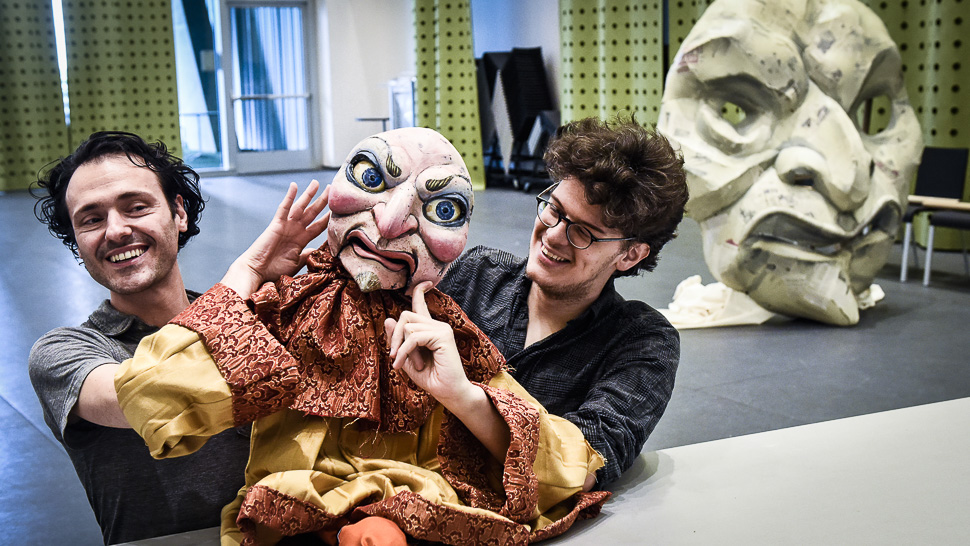
[Photo: Karen Almond via DTC]
From buckets and silverware to pinwheels and underwear, the puppets in Dallas Theater Center’s new musical were created from an assortment of repurposed materials.
Hood: The Robin Hood Musical Adventure, which debuts Friday, is described by puppet designer James Ortiz as a “mixture of popcorn and politics,” one that’s both necessary and essential, as it is a tale of young people taking a stand against injustice. The puppets and their unlikely makeup help tell the story as they star alongside actors and actresses.
Ortiz, a Richardson native who now lives in New York, is a playwright, puppeteer, and owner of the theater company, Strange Men & Co.
Ortiz and Stefano Brancato, Hood co-collaborator and associate puppet designer, created several puppets that will play both main and supporting roles in the DTC musical.
“James and I have a very similar approach to the theater,” said Brancato, who is both a puppeteer and performer in New York. “We utilize puppetry as a mode of storytelling and as an integral part of the story.”
THE DESIGN PROCESS
Before joining Hood, Ortiz was working on a show called The Woodsman. One night, Douglas Carter Beane, writer and director of Hood, was in the audience of the show. Ortiz, who is a fan of Beane’s, introduced himself.
They grabbed drinks and discussed Beane’s new show, Hood, and according to Ortiz, “one thing led to another and we started working with each other.”
Ortiz and Beane hit it off instantly — Ortiz was intrigued by Beane’s “wacky understanding and new interpretation” of Robin Hood, and together they embarked on a “really exciting design process.”
“How do [we] repurpose junk to tell the story [we] want to tell?”
James Ortiz
“Douglas Carter Beane… wanted to make a show that would be told by a troupe of rag-tag actors. Kind of like kids would play theater and put shows up in the back yard and use a mop for a dog and stuff like that,” Brancato said. “[Beane] wanted [the show] to have a very organic, playful, childlike feel to it, and so the inspiration was drawn from there.”
Ortiz thought, “How do [we] repurpose junk to tell the story [we] want to tell?”
Ortiz and Beane met for coffee and sifted through books of medieval tapestry art and other historical books for months, all in the hopes of “making a show that’s trying to be a collage.”
After brainstorming ideas for several months, Ortiz and Brancato then created about 13 puppets in just two weeks.
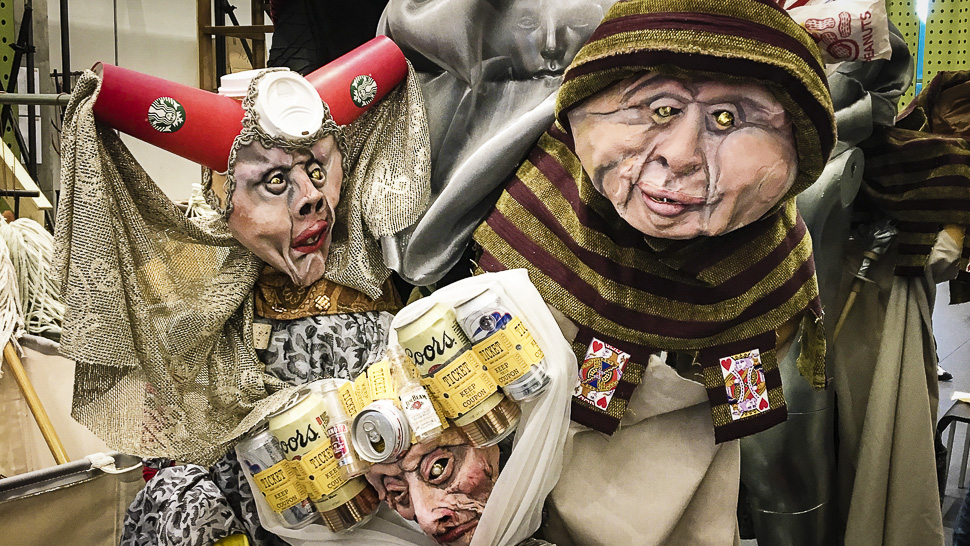
Hood puppets use coffee cups and beer cans for headpieces. [Photo: Karen Almond via DTC]
“Usually in the theater, you think about what the character is and begin to make design choices to create that puppet’s character,” Brancato said. “In this case, you’re really looking to the materials that you have on hand to dictate to you what that character is going to look like, how that character is going to be built, and what it’s going to be made out of.”
Ortiz and Brancato sought to give each puppet a character profile.
Ortiz asked himself, “What is the texture; what is the feeling I’d like to evoke from the audience?”
The answer, of course, was different for each puppet.
“Everything [the puppets are] wearing is some sort of found object that is being repurposed.”
James Ortiz
“Everything [the puppets are] wearing is some sort of found object that is being repurposed,” Ortiz said.
One puppet has pinwheels for eyes and cutlery for teeth. A dog appearing at the beginning of the show is made from dish towels.
For a vulture, Ortiz used lacy women’s underwear to craft the “fleshy, pink skin,” of the bird’s neck. He wanted the material to move in a “floppy, bizarre way.”
Ortiz designed one of the main characters, Prince John, hoping to convey “vain, arrogant greed” without using expensive items. The solution? Gold duct tape, shiny decals, and other dollar store finds.
Being able to use modern materials to evoke a centuries-old tale allowed the puppeteer to be creative and inventive in the way he designed the characters. Some puppets were even made with a political mindset.
“Some characters are cut from newspaper,” Ortiz said. “We tried to find current events that we could glue onto the sides of the faces to see if it had any resonance [with the audience] at all.”
HOW THE PUPPETS ARE USED
In Hood, puppets play both main and supporting roles. Some puppets are operated by two or three people at a time.
Other times, one person controls several puppets at once.
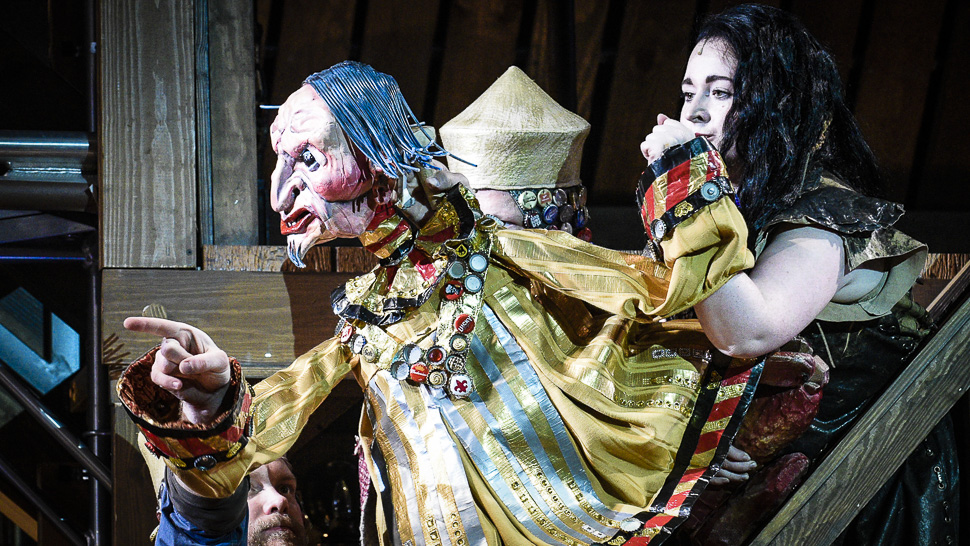
Prince John and the cast of Hood [Photo: Karen Almond via DTC]
“There were a bunch of scenes where we needed a variety of nobles” Ortiz said. He wondered if one person could wear five characters at the same time.
Ortiz successfully implemented this idea, and two actors now play five characters each. There is “some animation in all of them — some look at each other and communicate,” he said. The nobles are, of course, adorned with tuna-can and KFC-bucket hats.
THE PUPPETS’ PURPOSE
Ortiz said puppets in theater are oftentimes used as special effects for a monster or a “wow” moment, but not to express a character. His goal is to change this.
“A puppet, unlike an actor, is the character.”
Stefano Brancato
“What if I cast one of the most important roles on one of the shows I’m working on as a puppet? Can it express feelings and be a tool for actors to work with?” Ortiz asked himself.
Hood proves that the answer is, indeed, yes.
“[The puppets] support the storytelling,” Ortiz said. “Puppetry is such a fantastic art form that can be used to express beautiful ideas.”
Brancato agrees, and believes that puppets have an ability to connect with audiences in a different way than actors can.
“A puppet, unlike an actor, is the character,” Brancato said. “An actor is a human being who has a name and a life, and they perform a character; a puppet is inherently that character.”
“Unlike any other theatrical form, a puppet asks the audience to project life onto it, and the more that we [as theatrical practitioners] make those characters as real and true as possible, the more beautiful and the more profound the effect is on the story and thus on the audience.”
IF YOU GO
Hood: The Robin Hood Musical Adventure
When: Performances through Aug. 6
Where: Wyly Theatre, 2400 Flora St., in Dallas
More Info & Tickets: dallastheatercenter.org
GALLERY
Photos: Karen Almond via DTC
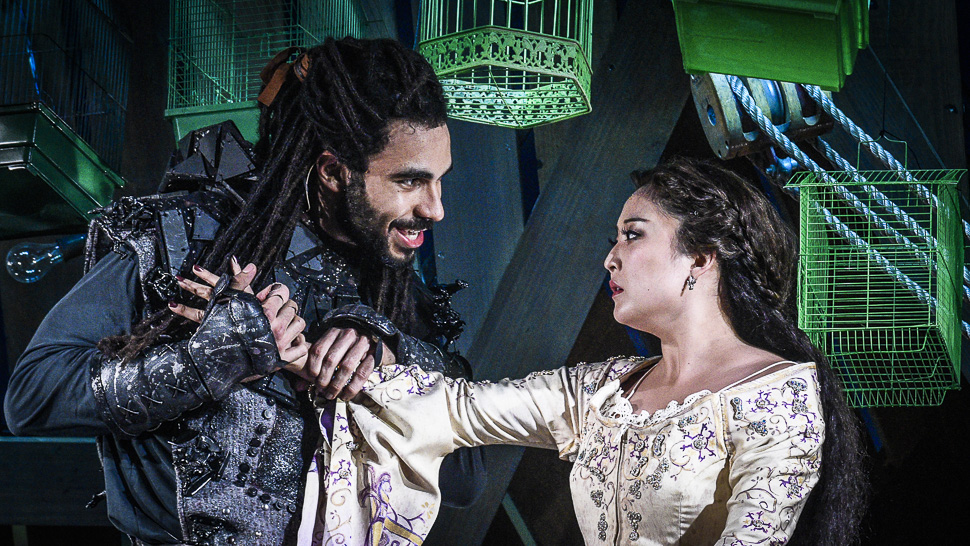
Austin Scott and Ashley Park in Hood.
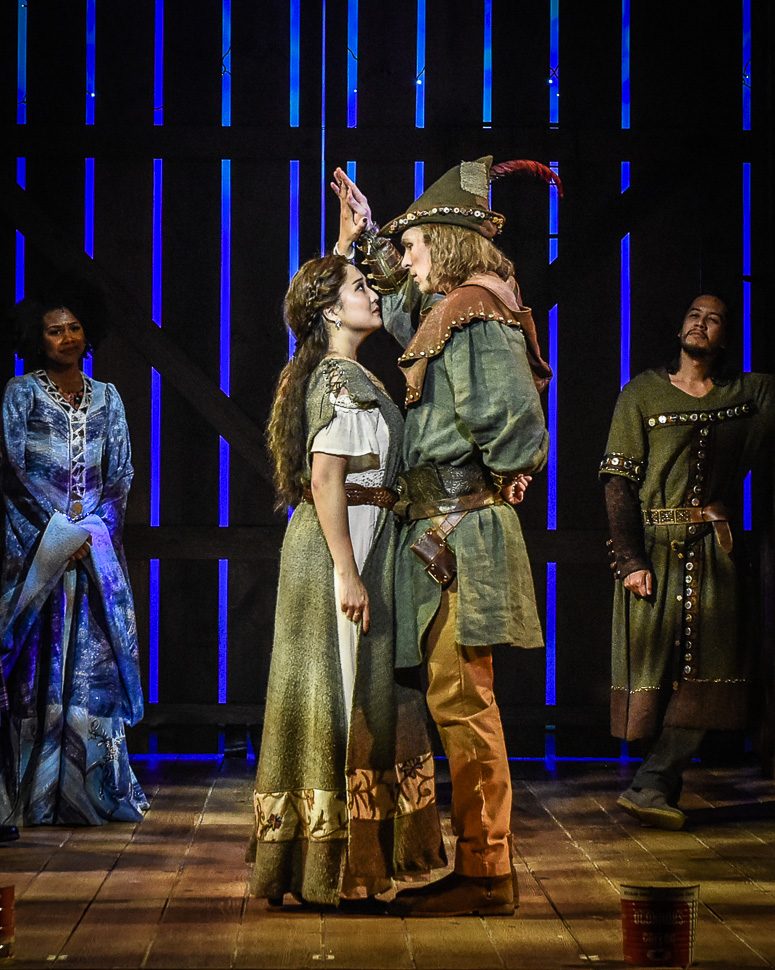
Ashley Park and Nick Bailey in Hood
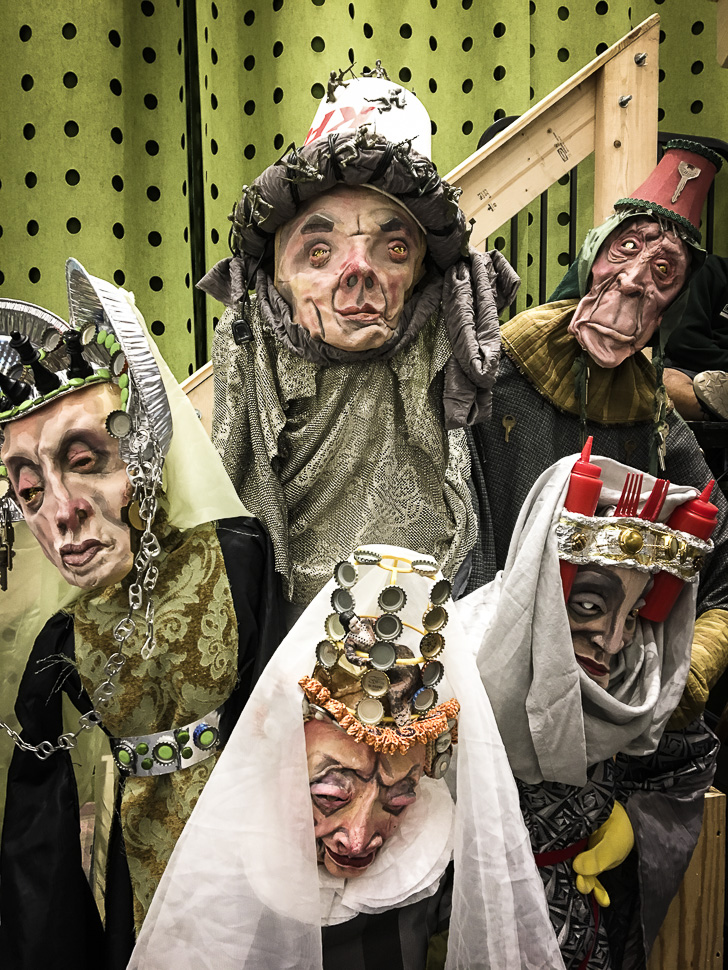
Puppets are adorned with bottle caps, ketchup bottles, and tiny army men.
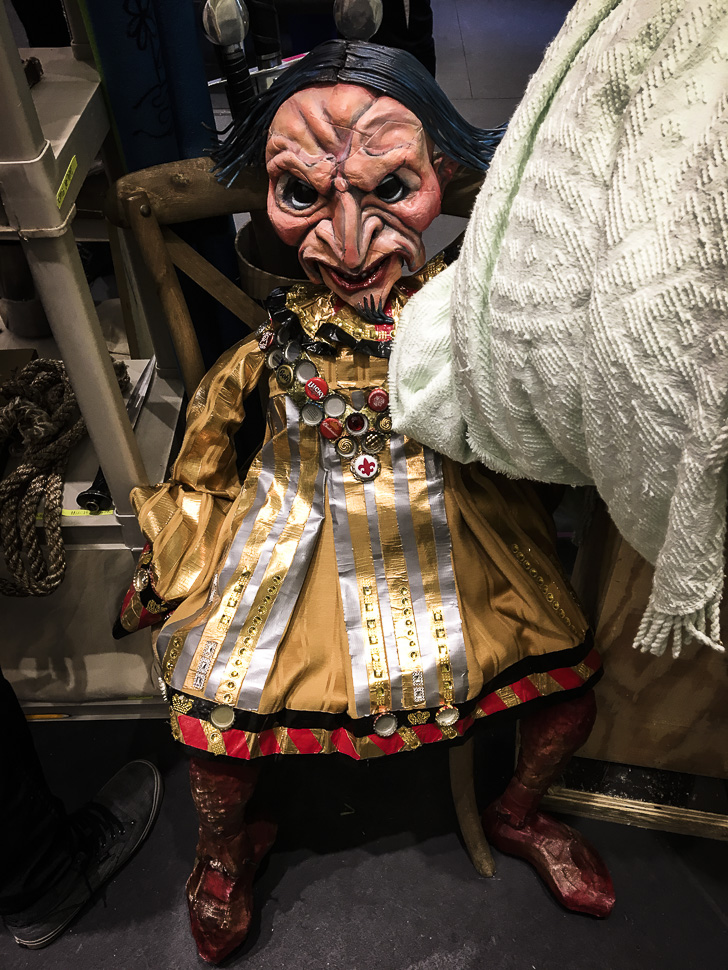
Gold duct tape, shiny decals, and other dollar store finds make the Prince John puppet look arrogant and greedy without the price tag of expensive costume items.










